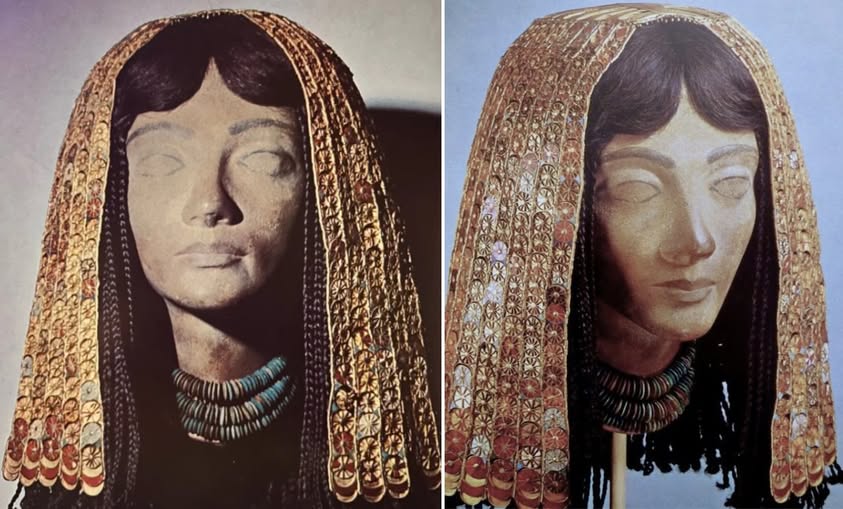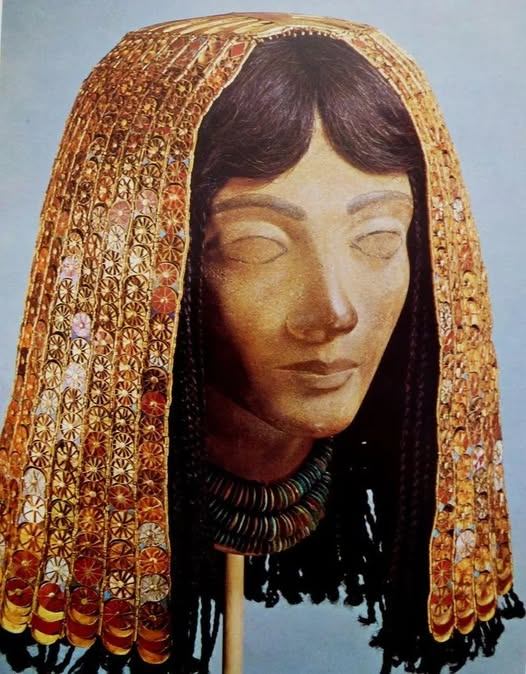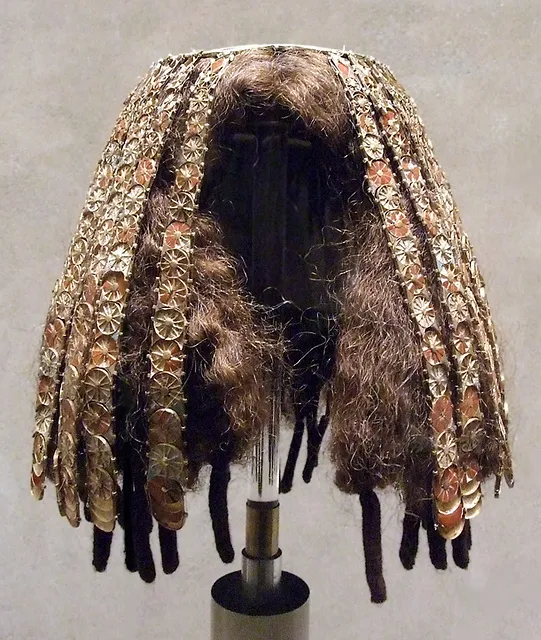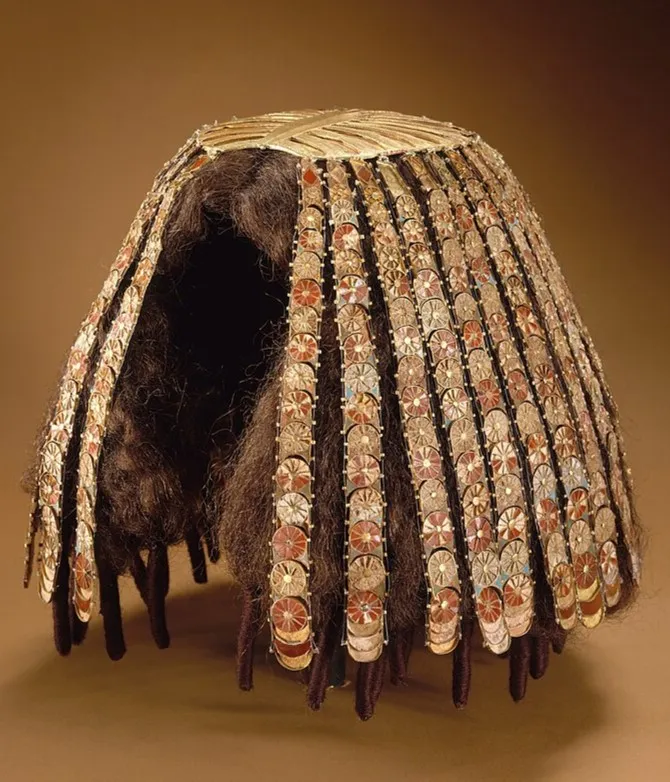Gold Headdress of a Lady of the Court of Thutmose III

This gold headdress inlaid with carnelian and turquoise (Met Museum 26.8.117) belonged to a queen of Thutmose III. Crafted from gold, gesso, carnelian, jasper, and glass, the piece reflects the exquisite luxury of royal adornment.

According to the Metropolitan Museum of Art, the rosettes from the funerary equipment of three foreign wives of Thutmose III have been arranged in several different ways since their arrival at the museum in 1926.

They were long displayed as part of a reconstructed wig cover—an idea first proposed by Herbert E. Winlock in 1937 and later modified—though current scholarship considers both their attachment to the gold disk (26.8.117bb) and the use of rosette strands as a wig covering to be uncertain.

Menhet, Menwi, and Merti—also spelled Manhata, Manuwai, and Maruta—were three minor foreign-born wives of Thutmose III of the 18th Dynasty. They are especially known for their richly furnished rock-cut tomb in Wady Gabbanat el-Qurud near Luxor. Their names fit Canaanite linguistic patterns, suggesting a likely West Semitic origin, though a Hurrian derivation has also been proposed in the case of Menwi.












